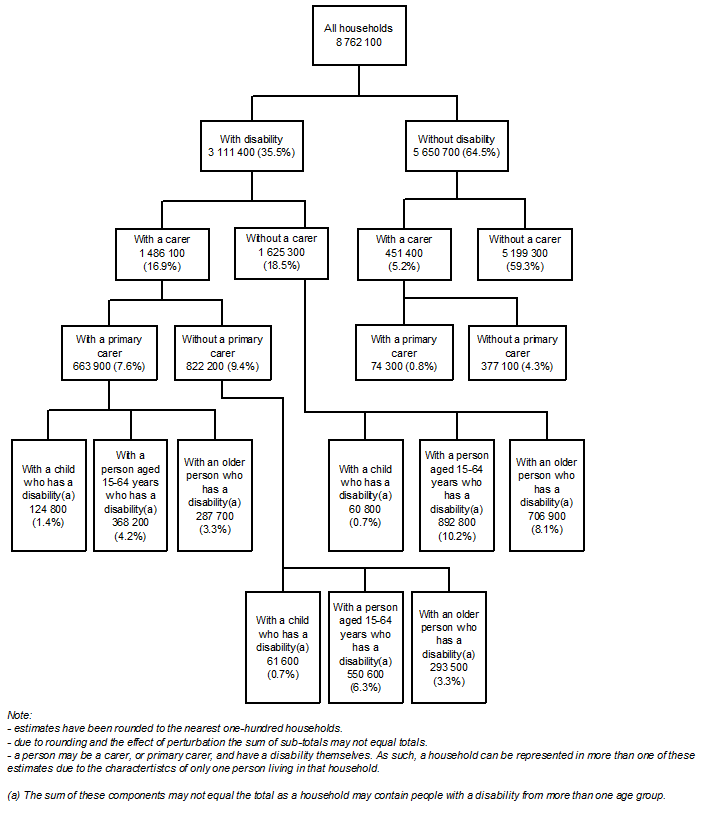 HOUSEHOLD CHARACTERISTICS - KEY FINDINGS
HOUSEHOLD CHARACTERISTICS - KEY FINDINGS
The needs of people with disability may impact on others, whether they are a carer or a relative, friend, or other acquaintance, who knows or lives with someone who has a disability. In 2012, although disability affected less than one in five people directly, around one third of Australian households contained a person with disability (36% or 3.1 million households). One in two of those households contained a carer (17% of all households), of which just under half contained a primary carer (7.6% of all households) (Table 35 and Figure 1).
Figure 1: All Households, by disability and carer status

For households containing someone with disability, the age of that person and the severity of their condition impacted on the make-up of their household. For example, in the 2012 SDAC, if a household contained a child aged 14 years or less with disability, in 75% of cases a carer also lived in the household. This compares with 48% of all households containing someone with disability. Four in five households containing someone with a profound or severe core activity limitation also contain a carer (79%), most commonly a primary carer (57%). For those households containing someone with a moderate or mild core activity limitation, less than half contain a carer (45%) and only 13% contain a primary carer. (Table 35)
While older people make up around one seventh of the Australian population (14%), one quarter of all households contain an older person (25%). In those households containing at least one older person with disability, nearly half contained a carer (45%) compared with 14% of households where the older person did not have a disability. (Table 35)
 Print Page
Print Page
 Print All
Print All
 Print Page
Print Page
 Print All
Print All